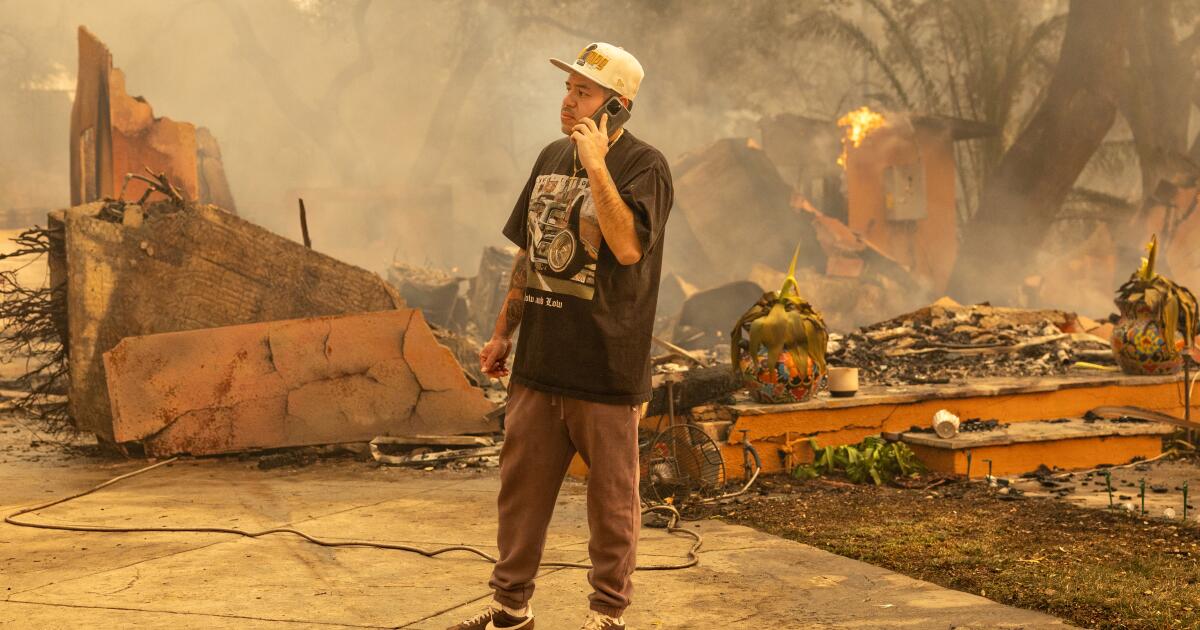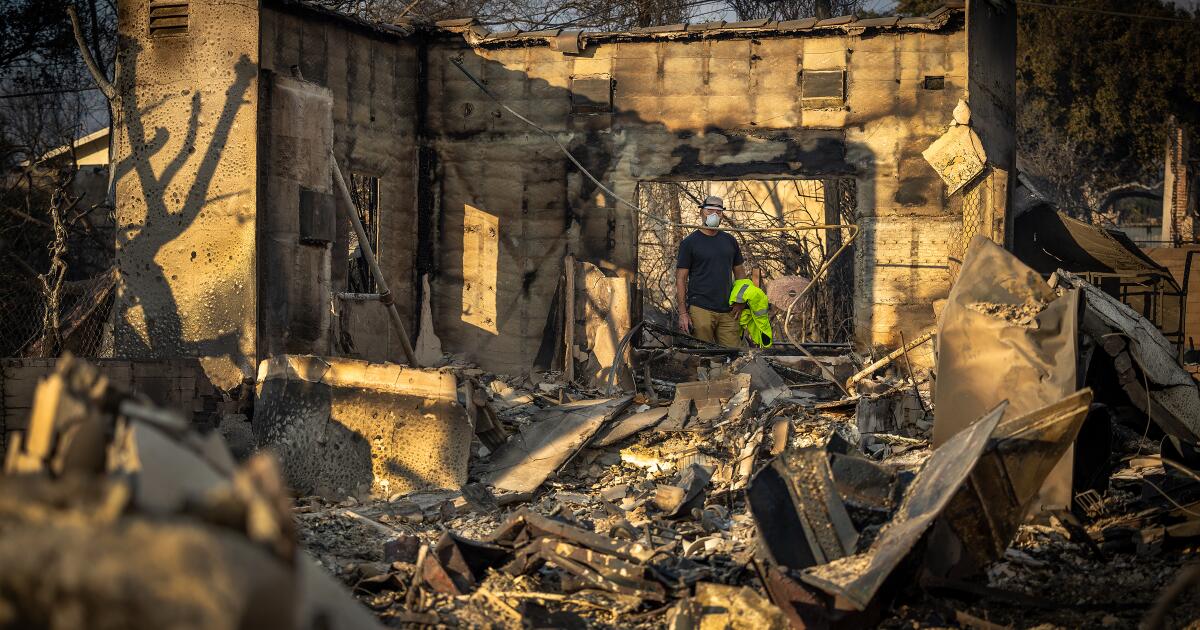Edison increases compensation for Eaton fire victims, but some say it’s not enough
Southern California Edison increased the number of Eaton fire victims that are eligible to file claims for damages in its final compensation proposal, though some Altadena residents say the utility’s program still falls short.
After talking to residents about the plan it released in July, Edison said it decided to expand the area of homes that are eligible for compensation for smoke damage.
“Expanding the eligibility area is one of the most significant updates made as a result of feedback,” said Pedro Pizarro, the chief executive of Edison International, the utility’s parent company. “The number of qualified properties nearly doubled for those with damage from smoke, soot or ash.”
The utility also increased the amount of compensation it is offering for some victims. For example, each child in a family that lost its home will be eligible to receive $75,000 for pain and suffering, up from $50,000 in the initial plan.
To receive payments under the utility’s Wildfire Recovery Compensation Program, families must agree to drop any lawsuits they filed against the utility for the Jan. 7 fire.
The program also is open to businesses that lost revenues and renters who lost property. And it covers those who suffered physical injuries or had family members who died.
Edison is launching the victim compensation program even though government fire investigators have not released their report on the cause of the fire. The inferno swept through Altadena, destroying 9,400 homes and other structures and killing 19 people.
Videos captured the fire igniting under a century-old transmission line in Eaton Canyon that Edison had not used since 1971, and Pizarro has said a leading theory is that the line somehow re-energized and ignited the blaze. Edison said in a federal securities filing this week that “absent additional evidence, SCE believes that it is likely that its equipment could be found to have been associated with the ignition.”
In documents detailing its final compensation plan, the utility included the example of a family of four with a 1,500-square-foot home that was destroyed. The family would receive $900,000 to rebuild, $360,000 for personal property, $140,000 for loss of use and $380,000 for pain and suffering. It also would receive a $200,000 “direct claim premium” for agreeing to settle outside of court.
That total of $1,980,000 is then reduced by the family’s $1 million of insurance coverage, according to the company’s example.
On Thursday, state Sen. Sasha Renée Pérez (D-Pasadena) sent a letter to Edison saying she was concerned about how the utility was requiring victims to waive their future legal rights in order to get compensation. And she called on Edison to provide immediate housing assistance to fire victims.
“Having acknowledged its potential role in starting the Eaton Fire, Edison must do everything within its power to prioritize the needs of survivors and make this commitment a core part of its corporate duty,” she wrote to Pizarro. “This means ensuring fire victims can recover and rebuild their lives with the support they are owed.”
Edison expects to be reimbursed for most or all of the payments it makes to victims by a $21-billion state wildfire fund that Gov. Gavin Newsom and lawmakers created in 2019 to shield utilities from bankruptcy. Administrators of the wildfire fund told members of the state Catastrophe Response Council this week that they expect Eaton fire claims “to be in the tens of billions of dollars.”
In September, Newsom signed a bill that will bolster the money available by another $18 billion for future wildfires. Under that bill, Edison is allowed to raise electric rates for any Eaton fire costs that exceed the original $21-billion fund.
Some Eaton fire survivors told the council, which oversees the wildfire fund, that Edison’s program fails to fully cover damages suffered by victims. Joy Chen, executive director of the Eaton Fire Survivors Network, recently sent the council a report detailing where her group found shortfalls. For example, Chen said, Edison is deducting a homeowner’s full insurance coverage from the compensation amounts even if the insurer has reimbursed the family for only part of that amount.
“Nine months after Edison’s negligence shattered our lives, the toll is clear,” the group’s report states. “Many have drained retirement savings, maxed out credit cards, or watched marriages and health deteriorate under the strain. “
“You destroyed our homes, lives and community,” the report says of Edison. “Fix what you broke. “
Chen’s group joined with Perez in calling for Edison to provide emergency housing assistance for victims.
Edison said its program is designed “to help the community recover and rebuild faster.” The utility said a report by RAND, the non-profit research group it hired to assess the compensation plan, determined the payment amounts “used modern statistical methods and in our judgment were thoughtfully done and well executed.”
Edison said victims can start filing for claims now and that it expects to get back to them with an offer within 90 days.

